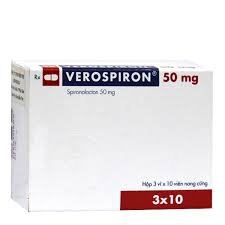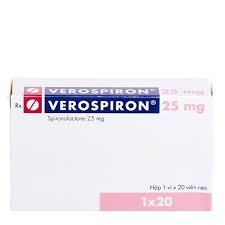Pharmacological action
Potassium-, magnesium-sparing diuretic. It is a competitive antagonist of aldosterone in its effect on the distal parts of the nephron (competes for binding sites on cytoplasmic protein receptors, reduces the synthesis of permeases in the aldosterone-dependent part of the collecting ducts and distal tubules), increases the excretion of Na +, Cl- and water and reduces the excretion of K + and urea, reduces the titratable acidity of urine. Increased diuresis causes a hypotensive effect, which is inconstant. The hypotensive effect does not depend on the level of renin in the blood plasma and does not occur with normal blood pressure.
The diuretic effect appears on the 2-5th day of treatment.
Pharmacokinetics
After oral administration, it is absorbed from the gastrointestinal tract, absorption is 90%. It is metabolized in the liver, the main active metabolite is canrenone. T1/2 is 13-24 hours. It is excreted mainly by the kidneys, some is excreted with bile.
Indications for the active ingredients of the drug Spironolactone
Edema in chronic heart failure, liver cirrhosis (especially with simultaneous hypokalemia and hyperaldosteronism), with nephrotic syndrome.
Edema in the second and third trimesters of pregnancy.
Arterial hypertension, including with aldosterone-producing adrenal adenoma (as part of combination therapy).
Primary hyperaldosteronism. Aldosterone-producing adrenal adenoma (long-term maintenance therapy when surgical treatment is contraindicated or in case of refusal). Diagnosis of hyperaldosteronism.
Hypokalemia and its prevention during treatment with saluretics.
Polycystic ovary syndrome, premenstrual syndrome.
Contraindications for use
Addison’s disease, hyperkalemia, hypercalcemia, hyponatremia, chronic renal failure, anuria, liver failure, diabetes mellitus with confirmed or suspected chronic renal failure, diabetic nephropathy, first trimester of pregnancy, metabolic acidosis, menstrual irregularities or breast enlargement, hypersensitivity to spironolactone.
Warning: Always consult a doctor before using medications.












